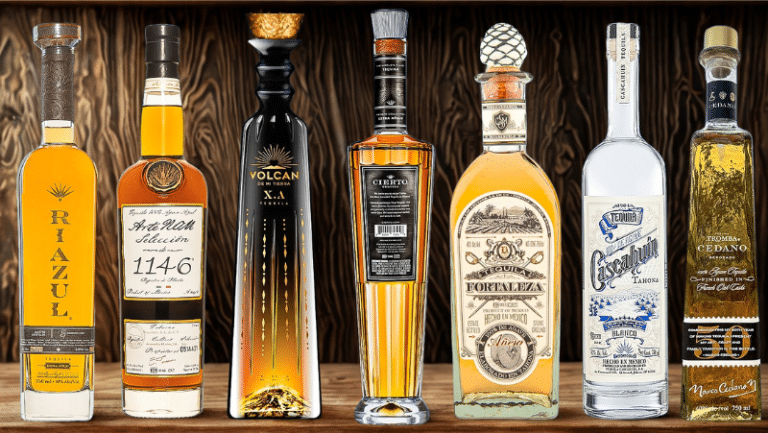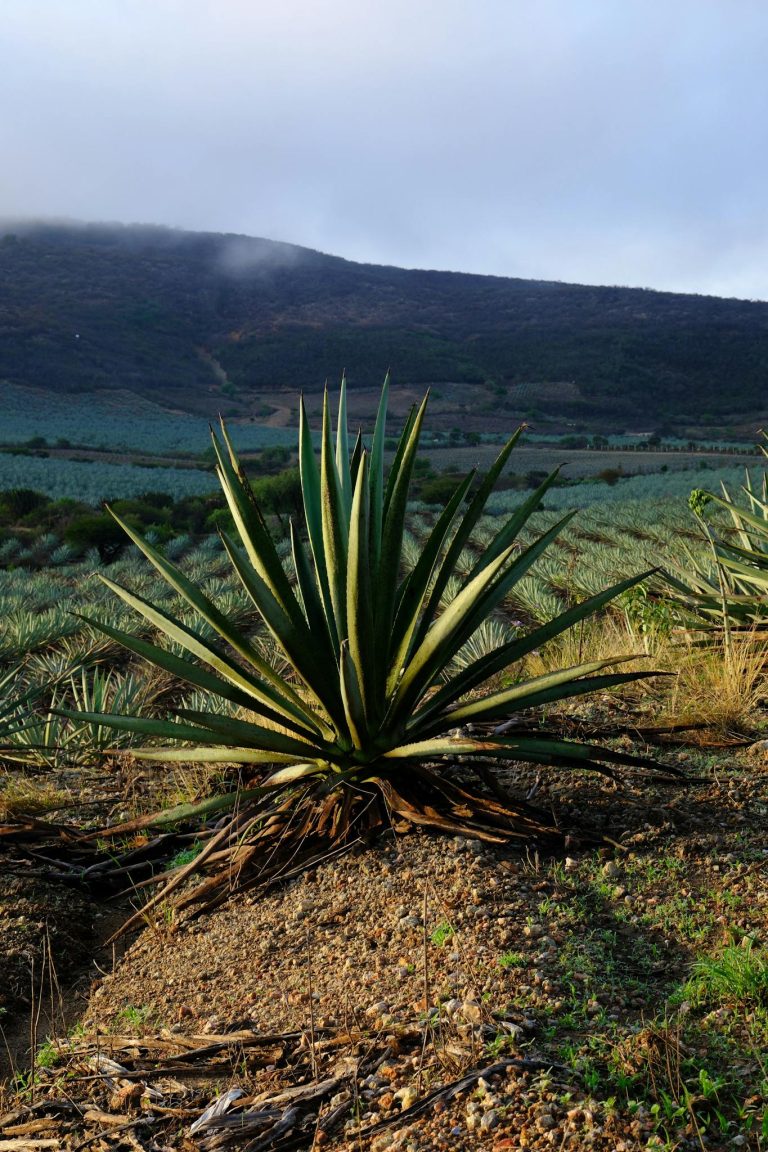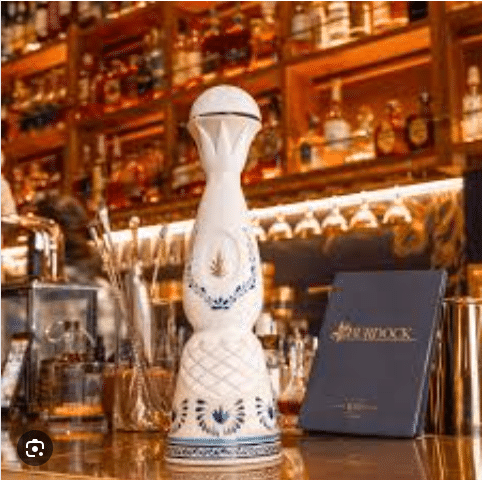Tequila Tasting Mistakes to Avoid in 2025: Expert Guide
Did you know that over 70% of people make at least three fundamental mistakes when tasting premium tequila?…

Did you know that over 70% of people make at least three fundamental mistakes when tasting premium tequila? As Mexico’s most iconic spirit continues to surge in popularity, with premium tequila sales growing by 38% in 2023, it’s crucial to know how to appreciate it properly. Whether you’re a curious newcomer or a seasoned enthusiast, avoiding these common tequila tasting mistakes will help you experience tequila’s true complexity and character. Let’s explore the most frequent errors and how to correct them!

Temperature and Serving Mistakes
Let me share something that revolutionized my premium tequila appreciation journey. Walking into fancy bars and watching them pull premium tequila from the freezer used to drive me nuts. After attending a professional tequila tasting workshop with a master tequilero in Jalisco, I discovered that proper tequila serving temperature is crucial. I do not recommend drinking tequila straight out of the freezer. Ice-cold temperatures actually numb our taste buds and lock up the delicate agave expression in tequila.
Improper storage and temperature control of tequila can significantly impact its flavor. The unique compounds that contribute to the rich tastes of cooked agave, citrus, and vanilla are unable to express themselves fully. At low temperatures, the aromatic compounds that give tequila its distinct smell cannot evaporate effectively, resulting in a loss of about 80% of the spirit’s complex flavors. Don’t do not drink it too cold!!
Through extensive spirit tasting experience, I’ve found that the proper tequila serving temperature is between 62-68°F (16-20°C). This is where traditional tequila service really shines. At this range, your tequila flavor wheel comes alive – from earthy minerals characteristic of highland tequila characteristics to gentle pepper notes, even chocolate or floral hints in an añejo tequila appreciation session.
Another crucial aspect of proper tequila serving. I cringe thinking about serving premium spirits in shot glasses. Now I use a proper Riedel tequila glass or snifter. Proper spirit assessment demands glassware with a slight taper to concentrate the tequila aroma wheel, with enough room for full flavor development.
One often-overlooked aspect of tequila tasting etiquette is resting time. After pouring, let your spirit rest for 2-3 minutes. This patience in your tequila tasting steps allows oxygen exposure to enhance the agave spirit complexity and release subtle tequila flavor compounds.
Try this tequila evaluation method yourself: compare two servings – one cold, one at proper temperature. The difference in spirit tasting structure is remarkable! The room temperature version reveals the full spectrum of your tequila sensory analysis. Follow these premium tequila service guidelines, and you’ll transform your entire tequila tasting experience from ordinary to extraordinary.
Nosing and Aroma Assessment Errors
My first attempt at professional tequila tasting went hilariously wrong – I plunged my nose deep into the glass, took an aggressive sniff, and nearly singed my sinuses! That mistake taught me everything about spirit nosing mistakes.
Here’s a crucial lesson in tequila tasting etiquette that most spirit tasting guides miss: your olfactory system is incredibly sensitive. During my premium spirit assessment training, a veteran catador (professional taster) explained that aggressive nosing overwhelms your receptors with alcohol vapor, making it impossible to detect the complex tequila aroma profile.
The proper tequila nosing technique is deceptively gentle. Following traditional tequila service methods, hold your tequila glassware about 1.5 inches (4 cm) from your nose. Take soft, delicate sniffs to discover the full tequila flavor wheel – from highland tequila characteristics to lowland tequila traits.
A common mistake in spirit tasting protocol is leaving your glass exposed between evaluations. Those precious tequila flavor compounds evaporate quickly! Professional tequila tasting standards recommend using a tasting card to preserve the agave spirit complexity. This simple step in proper spirit assessment makes a remarkable difference in your tequila sensory analysis.
Here’s a tequila evaluation method that transformed my approach: begin with the glass at chest level and slowly raise it while practicing proper tequila nosing. I’ve learned to approach from multiple angles, as each position reveals different aspects of the tequila aroma wheel. This technique is especially important when developing your tequila tasting vocabulary.
Temperature control significantly impacts your tequila flavor identification. The full spectrum of agave expression in tequila only emerges at the proper tequila serving temperature. As your spirit warms slightly, you’ll discover layers of complexity – from cooked agave to spice notes, and even subtle mineral or fruit characteristics that define premium tequila appreciation.
Remember, developing your spirit tasting structure takes time. Focus on the journey of tequila flavor evolution rather than rushing to match specific tasting notes. True tequila tasting experience comes from patient, mindful evaluation.
Tasting Technique Blunders
Let me share some critical spirit tasting mistakes I made during my premium tequila appreciation journey. When I first started exploring premium spirit assessment, I rushed through tastings like a college student – completely missing the art of proper tequila serving and tasting.
My most embarrassing moment in tequila tasting etiquette? Bringing an expensive añejo tequila appreciation session to a friend’s house, only to watch them shoot it back. Here’s what every tequila tasting guide emphasizes: shooting premium tequila bypasses all the complex tequila flavor compounds that master distillers carefully develop through traditional tequila service.
Let me share the proper tasting technique I learned in my professional tequila tasting training. The key to tequila flavor development is taking a small sip and letting it coat your tongue for 5-8 seconds. This spirit tasting protocol allows you to experience the full tequila flavor wheel – watching how initial impressions transform into complex waves of agave expression in tequila.
Spirit tasting preparation is crucial. A common mistake in tequila tasting steps is consuming coffee beforehand. Following proper spirit assessment guidelines, I now prepare with room temperature water and neutral crackers 30 minutes before evaluating tequila flavor evolution.
Temperature control is essential in proper tequila storage and service. For optimal tequila sensory analysis, start your blanco tequila tasting slightly cooler (62°F), then allow your reposado tasting notes and añejo tequila appreciation to develop at slightly warmer temperatures. This progression in premium tequila service reveals the full spectrum of highland tequila characteristics and lowland tequila traits.
Here’s a key tequila evaluation method: between tastings, cleanse your palate with plain tortilla and room temperature water. This spirit tasting structure prevents fatigue and maintains your tequila tasting vocabulary accuracy. During vertical tastings, proper temperature progression unveils remarkable complexity factors in premium spirit assessment.
Remember, developing your tequila flavor identification skills takes patience. Each premium tequila service deserves time to reveal its complete agave spirit complexity. Trust your tequila tasting experience to evolve naturally through mindful evaluation.
Common Palate Interference Mistakes
I’ve had some hard-learned lessons about palate interference. I used to think I could just jump into a tequila tasting whenever I felt like it, but boy, did I learn that timing and preparation make a huge difference!
One of my most memorable tasting blunders happened after a spicy Thai lunch. I was excited to try this new añejo I’d been saving, but everything just tasted like alcohol and wood. No subtle notes, no complexity – just wasted money and disappointment. That experience taught me a valuable lesson about how certain foods can completely wreck your palate for hours afterward.
Here’s what I’ve learned about the worst palate-killers: anything spicy is absolute murder on your taste buds. But there are some sneaky offenders too! Coffee is a major culprit – I used to love doing Sunday morning tastings with my coffee still on my breath (terrible idea). Even that morning orange juice can mess with your ability to detect subtle flavors. And don’t get me started on garlic – it’s like putting a mask on your taste buds for the whole day.
Speaking of timing mistakes, I made a rookie error at a tasting event by trying to “prepare” with a big breakfast. Turns out, having a full stomach actually dulls your palate sensitivity. These days, I know to eat a light, neutral meal about 2-3 hours before any serious tasting session. Think plain toast or a simple sandwich – nothing that’ll linger on your palate.
I also have a pre-tasting preparation routine. About two hours before a tasting, I stop eating anything with strong flavors. Thirty minutes before, I start sipping room temperature water – not cold, as that can numb your taste buds. I also keep some plain, unsalted crackers handy to reset my palate between expressions. I’ve learned to limit myself to 3-4 expressions max, with plenty of water and neutral crackers in between.
The biggest game-changer was creating a “clean palate environment” before tastings. That means no scented candles, no food cooking nearby, and definitely no perfumes or colognes. I once had to completely restart a tasting because someone walked in wearing strong perfume – those aromatic compounds can seriously interfere with your ability to detect subtle notes in the tequila.
Remember, your palate is like a sensitive instrument – it needs proper care and preparation to perform at its best. Taking these extra steps might seem fussy at first, but they make a world of difference in your ability to appreciate all the nuances in a good tequila.
Evaluation and Assessment Errors
Let me share how I refined my premium spirit assessment techniques through years of tequila tasting experience. Despite reading countless spirit tasting guides, my first professional tequila tasting with a master distiller revealed how much I had to learn about proper tequila evaluation.
A classic mistake in tequila sensory analysis is rushing to judgment. I once dismissed a premium tequila as “harsh” after one sip, completely misunderstanding highland tequila characteristics. Those intense peppery, mineral-forward notes I criticized are actually prized markers in traditional tequila from the Highlands region.
Here’s a common misconception in tequila flavor identification: equating color with quality. Many novices in tequila appreciation courses assume darker añejo tequila expressions indicate superior craftsmanship. However, proper spirit assessment reveals that even a crystal-clear blanco tequila tasting can showcase remarkable agave spirit complexity.
Systematic spirit evaluation methods are crucial. I’ve developed a detailed tequila scoring system that tracks production region, cooking method, still type, and comprehensive tequila tasting vocabulary. This structured approach to premium tequila appreciation helps develop your spirit tasting protocol and understanding of tequila complexity factors.
A breakthrough in my tequila flavor wheel interpretation came from learning about flavor development. Professional tequila tasting emphasizes evaluating the complete journey – entry, mid-palate, and finish. This approach to tequila flavor evolution reveals how seemingly simple spirits can unfold into fascinating expressions of agave spirit complexity.
Temperature control is vital in proper tequila serving. Through careful spirit tasting structure, I’ve learned that blanco tequila shows best around 62°F, while reposado tasting notes and añejo tequila appreciation require slightly warmer temperatures for optimal flavor compound expression. However, this can also be a personal preference.
Remember, mastering tequila evaluation methods is an ongoing journey. Your understanding of tequila flavor analysis and lowland tequila traits will continually evolve. Many expressions I initially misunderstood are now favorites in my premium spirit service rotation, proving how crucial proper spirit assessment skills are to fully appreciating this complex spirit.
Conclusion
Understanding and avoiding these common tequila tasting mistakes will dramatically enhance your appreciation of this sophisticated spirit. Remember, proper tequila tasting is an art that rewards patience and attention to detail. By implementing these expert tips, you’ll be better equipped to explore the rich world of premium tequila and discover your personal preferences. Ready to put your new knowledge into practice? Gather some friends, select a few quality expressions, and start your journey toward becoming a more discerning tequila enthusiast.
Learn More About Tequila
- Learn How to Choose the Best Tequilas.
- What is Añejo Tequila? Complete Guide.
- Tequila Vs. Mezcal. Key Differences.
- How to Taste Tequila Like an Expert.







Your blog has become one of my favorite resources; I can’t wait for new articles.
Thank you for your feedback. I appreciate your comments.